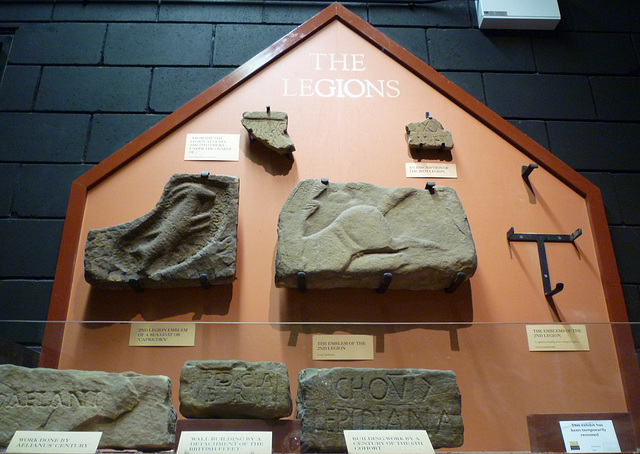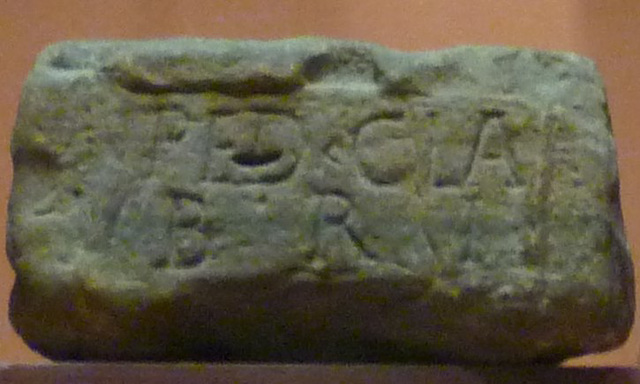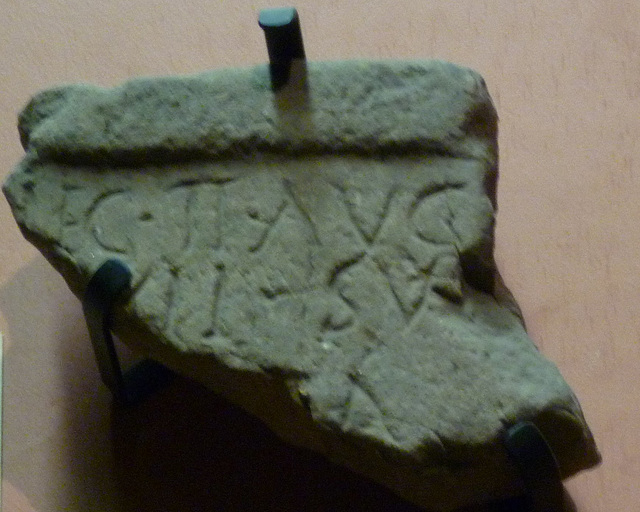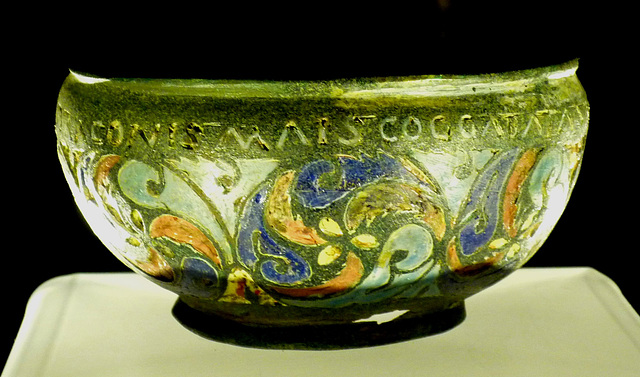
Carlisle
Folder: Places
Carlisle is the county town of Cumbria in North West England.
The early history of Carlisle is marked by its status as a Roman settlement, established to serve the forts on Hadrian's Wall.
During the Middle Ages, because of its proximity to the Kingdom of Scotland, Carlisle became an important military stronghold. Carlisle Castle, still relatively intact, was built in 1092 by William Rufus, and … (read more)
The early history of Carlisle is marked by its status as a Roman settlement, established to serve the forts on Hadrian's Wall.
During the Middle Ages, because of its proximity to the Kingdom of Scotland, Carlisle became an important military stronghold. Carlisle Castle, still relatively intact, was built in 1092 by William Rufus, and … (read more)
25 Feb 2012
Medallion
This lavender-coloured glass medallion was found c1850. It represents Agrippina Senior, the mother of the Emperor Gaius (Caligula).
Tullie House Museum, Carlisle, England.
February 2012.
25 Feb 2012
Builder's Inscriptions
Some of the builder's inscriptions from Hadrian's Wall.
In Tullie House Museum, Carlisle.
February 2012.
25 Feb 2012
1 favorite
1 comment
Sea-Goat
The sea-goat (Capricorn), half goat/half sea creature was the astrological sign adopted by the Roman Emperor Augustus. It features on a number of his coins. It was also the symbol of the Second Legion Augusta (LEG II AVG). This one was found on Hadrian's Wall and marks a section built by that legion.
Legio secunda Augusta (Second Augustan Legion), was originally raised by Octavian (later Augustus) and consul Gaius Vibius Pansa Caetronianus to fight against Mark Antony in 43 BC.
In Tullie House Museum, Carlisle.
February 2012.
25 Feb 2012
Stone Building Inscription
One of many from Hadrian's Wall dedicated to the unit which built the section where the stone was found, in this case the foot-soldiers of the British Fleet:
PED CLA BRI
'The foot-soldiers of the British Fleet [made this].'
(RIB 1945)
In Tullie House Museum, Carlisle.
February 2012.
25 Feb 2012
Stone Building Inscription
One of many from Hadrian's Wall - this is dedicated to the legion which built this particular section:
LEG II AVG
VII SV
The Second Legion Augusta, 7th Cohort
The Second Augusta was originally raised by Octavian (later Augustus) and consul Gaius Vibius Pansa Caetronianus to fight against Mark Antony in 43 BC.
In Tullie House Museum, Carlisle.
February 2012.
25 Feb 2012
Staffordshire Moorlands Pan
The Staffordshire Moorlands Pan is from the 2nd century AD with an inscription relating to the forts of Hadrian's Wall. It was discovered in 2003 by metal detectorists in north Staffordshire.
This pan (trulla) is made of copper alloy, with Celtic-style ornament inlaid with turquoise, blue, red and yellow-coloured enamel. The handle and base are missing. Below the rim is an enamel-inlaid inscription which encircles the pan: MAIS (Bowness-on-Solway) COGGABATA (Drumburgh) VEXLODVNVM (Stanwix) CAMMOGLANNA (Castlesteads) RIGORE VALI AELI DRACONIS. The four names are forts in the western sector of Hadrian's Wall.
The part of the inscription which reads RIGORE VALI AELI DRACONIS is very significant but more difficult to interpret. 'Rigore vali' seems to be a direct reference to Hadrian's Wall, for in Roman times it was known as 'the vallum'. 'Aeli' may also belong with that phrase, specifying 'the wall of Hadrian', for Aelius was Hadrian's family name. Alternatively, 'Aeli' could belong with the word 'Draco', forming the personal name Aelius Draco (or Dracon). He may have been a soldier who had the pan made as a souvenir of his military service on the Wall.
Seen in Tullie House Museum, Carlisle.
February 2012.
Jump to top
RSS feed- Latest items - Subscribe to the latest items added to this album
- ipernity © 2007-2025
- Help & Contact
|
Club news
|
About ipernity
|
History |
ipernity Club & Prices |
Guide of good conduct
Donate | Group guidelines | Privacy policy | Terms of use | Statutes | In memoria -
Facebook
Twitter







